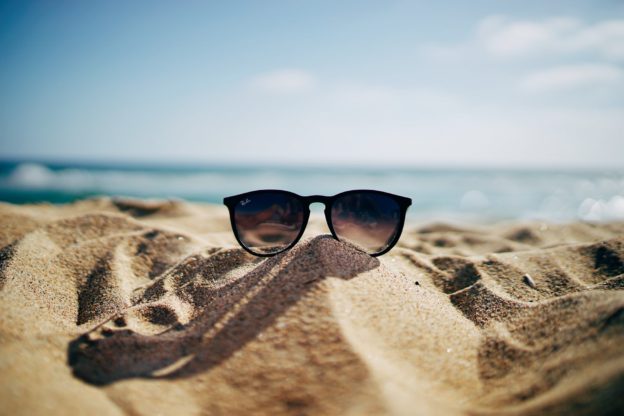With the UK Summer providing us with sun and heat worthy of weekends away and beach trips. We’re using this blog post as an opportunity to share the importance of wearing sunglasses, and are exploring whether polarised or standard tint are best for your protection.
Wearing sunglasses whilst out in the sunlight is just as important as wearing sun cream. Ultraviolet (UV) rays going into the eyes can cause a range of problems.
DID YOU KNOW? 20% of all cataracts are the direct cause of overexposure to UV rays
Source: Oxford Online Pharmacy
Other problems that can come from UV rays include macular degeneration and even skin cancer on the eyelids. The best protection you can get will come from sunglasses that block out 99-100% of the UVA and UVB rays or have a UV 400 rating. Protecting your eyes and the surrounding area with sunglasses filters out the harmful rays and helps to keep your eyes healthy.
There are hundreds of thousands of sunglasses on the market, so finding the right pair can be a small feat in itself. However, the importance of finding sunglasses that will effectively protect your eyes could be the difference in real protection and more damage. Where a lot of people stumble is working out whether to go for polarised or standard tinting. What’s the difference? And which works better? Here’s what you need to know:
Polarised Lenses
Polarised lenses have a special coating on them that scatters light as it travels to your eye. When light hits some surfaces (metal, pavements, water etc), the way that it reflects back into your eye can be very uncomfortable and can even cause temporary blindness. This is known as glare, and the coating on polarised sunglasses prevents this glare from damaging your eyes.
Pros
- Due to the reduction in glare, your eyes will feel much more comfortable in bright conditions (like driving, skiing or at the beach).
- Polarised glasses allow for clearer vision when near water.
- The lack of eye-strain from glare can prevent fatigue.
Cons
- Polarised glasses make it very difficult to read LCD screens. Some images even disappear when looked at from certain angles.
- If you’re using polarised glasses for skiing, they may compromise the contrast, which would make it difficult to notice ice patches.
- Polarised glasses are 30-40% more expensive than standard tint.
Standard Tinting
Standard tinted glasses don’t have this coating, so they aren’t able to fight the glare. They will still block out the sun’s brightness, as they simply dim the entire field of vision. As they don’t have this special coating, it generally makes them cheaper than polarised glasses, and can be sufficient for general use.
Pros
- They’re cheaper than polarised glasses and are usually readily available in high street shops.
- Standard tinted sunglasses are more common, which means there is generally more variety in terms of frame, lens colour and overall style choice.
- Non-polarised sunglasses can still offer good UVA and UVB protection from the sun and are perfectly acceptable for everyday use.
Cons
- Non-polarised glasses don’t block out glare, so if you’re driving or somewhere with highly reflective surfaces, they may not be sufficient.
- Even with a very dark tint, you may still experience headaches or eyestrain with standard tinted glasses.
- Colour and clarity of vision is not enhanced as much as it is with polarised lenses. In fact, colour may be dulled with standard tinted glasses.
All in all, both kinds of sunglasses offer their own different benefits. Depending on your needs and activities, either standard tinted or polarised could be the better choice for you. If you’re unsure as to what kind of lenses are best for your needs, then please do pop in to see us, and we’ll be happy to advise.

